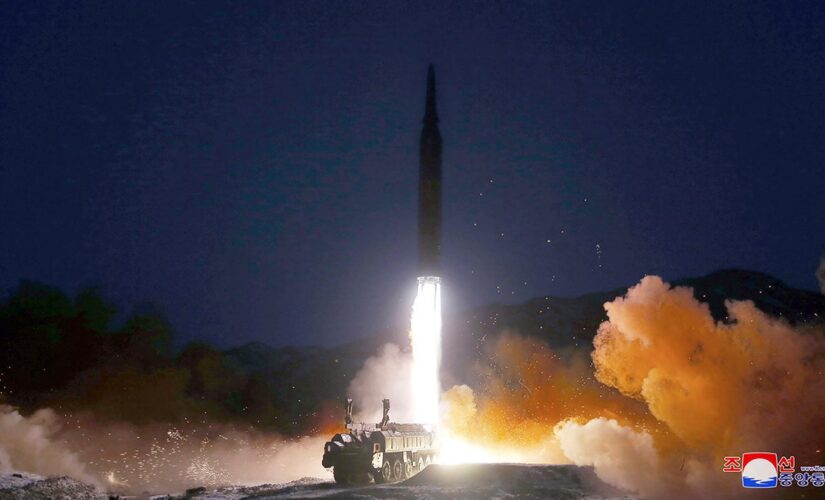The U.S. and South Korean militaries are extending joint air force drills into this weekend after North Korea fired an intercontinental ballistic missile (ICMB), as well as two short, rang missiles Thursday.
South Korean media reported that officials believe the North’s ICBM failed in flight but did not elaborate. Meanwhile, North Korea’s two short-range ballistic missiles fell into the sea to its east. Japan initially sounded alarms after tracking suggested the ICBM would fly over the island nation, but officials later said they lost track of it mid-flight, according to Reuters.
“North Korea’s ICBM launch is presumed to have ended in failure,” the South Korean military wrote, according to Yonhap news agency.
ICBMs are devices capable of traveling nearly across the globe to deliver a nuclear warhead.
NORTH KOREA WARNS OF ‘MORE POWERFUL’ RESPONSE TO JOINT US-SOUTH KOREA MILITARY DRILLS
This photo provided by the North Korean government shows what it says a test launch of a hypersonic missile on Jan. 11, 2022 in North Korea. Korean Central News Agency/Korea News Service via AP)
((Korean Central News Agency/Korea News Service via AP))
South Korean Air Force’s F15K fighter jets and U.S. Air Force’s F-16 fighter jets, fly in formation during a joint drill in an undisclosed location in South Korea, Tuesday, Oct. 4, 2022.
(South Korea Defense Ministry via AP)
NORTH KOREA LAUNCHES BALLISTIC MISSILE TOWARD ITS EASTERN WATERS, SOUTH KOREA SAYS
North Korea conducted a record 20 missile launches on Wednesday alone as the U.S. and South Korea flew hundreds of aircraft to simulate operations.
It was the largest barrage of missiles the North has ever fired, with one landing just 16 miles away from the South Korean sea border.
North Korea has grown increasingly aggressive since the U.S. and South Korea began joint military exercises in September. The country also flew 12 warplanes near the South Korean border in early October. The sortie included eight fighter jets and four bombers. South Korea responded with a flight of 30 warplanes, but the two groups did not engage.
The U.S. and South Korea’s joint air force exercise, Operation Vigilant Storm, was scheduled to end Friday but will now extend into the weekend following North Korea’s launches.
The exercise sees allied fighter jets and bombers conducting simulated attacks across South Korea 24 hours a day.
North Korea’s leader Kim Jong Un addresses the Supreme People’s Assembly, North Korea’s parliament, which passed a law officially enshrining its nuclear weapons policies, in Pyongyang, North Korea, September 8, 2022 in this photo released by North Korea’s Korean Central News Agency (KCNA).
(KCNA via REUTERS)
South Korea had a failed missile launch of its own in October. The malfunction came as the U.S., South Korea and Japan were seeking to send a message to the North Korean regime after it sent its own ballistic missile flying over the island of Japan. U.S. military officials clarified that the warhead on South Korea’s missile did not explode, but the propellant caused a large blast and flames.
CLICK HERE TO GET THE FOX NEWS APP
No injuries were reported from the incident, civilian or otherwise, and South Korean officials say no buildings were damaged.




